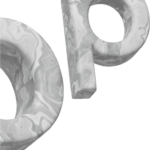

Set up your shop
Create my project

Conducting Market Research for Your Retail Business
22 January 2024
Market research is a critical step for a successful retail venture. It’s a means of collecting and analysing data related to your market sector pertaining to consumer behaviours, trends and purchasing patterns, preferences, demographics, external economic factors, and competition.
In this article, we’ll provide a comprehensive guide on how to effectively conduct market research and how it can be best put to use.
Defining the Scope and Objectives
The first step in creating your market research is defining the scope and objectives of your research. You will need to decide what information you’d like to focus on.
Market research can cover a wide spectrum of topics, from the size of the market to future forecasting of changes in customer demographics. But it can also cover marketing and advertising, retail distribution channels, sales methods, competition, and even the products and unmet customer needs.
Clearly defining the scope of your research will make it possible to focus on the most relevant and actionable parts of the market.
Identifying Target Market Segments
Start by identifying the market segment you would like to target. A market segment is basically a portion of the whole market, the customers, that are most aligned to your products. For example, a variety of individuals purchase perfumes. However, a certain percentage of those people buy only the most expensive luxury brands, others are more cost sensitive, while others are driven by marketing that ensures them the products they buy don’t undergo any animal testing or use only natural, eco-friendly ingredients.
When you’ve decided which segment of the market you will focus on, you’ll be able to target specific demographics. We can imagine a much smaller percentage of 18–25-year-olds can afford to spend more than £150 for a bottle of perfume when compared to an older, financially secure customer base.
Psychographics are another way to home in on a particular market segment. This is the practice of statistically classifying customers based on similar psychological profiles, such as beliefs and opinions, interests, and lifestyles. This will enable you a further level of precision when deciding who to target and what your marketing and communication should look like.
Secondary Data
There are two main sources of data that you’ll use in market research: primary and secondary sources. Secondary information is vital if you want a larger picture of the market as a whole.
As a small retailer, you won’t have the time or budget to carry out a sweeping, full-scale market study. But don’t worry, there are still plenty of resources available to you on the internet, from industry insight reports to governmental databases.
Take the time to look at the information already available to corroborate or disprove your suspicions when it comes to your target customers. What population has expendable income for your product? What are their age ranges and socio-economic status? What economic shifts could improve or jeopardise your retail business?
Primary Research
Primary research is a way to get information that is specific to you or not already published and available on the web. There are multiple ways to carry out primary research, from surveying your current clients to observing how they interact with the products in your shop.
Of course, if you haven’t opened your doors yet, you won’t have access to a ready list of clients to communicate with or survey. You can still visit competitors’ shops to gather observational data that will be transferable to your own store. On top of that, you can post online surveys, run an ad to find respondents, or even take to the street to query likely future potential clients.
Let’s find out more about these primary research methods.
Surveys and Questionnaires
Specifically targeting your customers or potential customers means creating and carrying out surveys or questionnaires. One of the easiest ways to carry out such surveys, especially for an online marketplace, is to send a follow-up survey after delivery. Or, if you run only a physical location, you could request the customer’s email address when creating a loyalty card or offer a promotional prize drawing for respondents.
Once you have a pool of respondents, it’s important to formulate your survey questions in a way that you are able to pull the most value for the time you are asking customers to invest. Keep the questions open-ended, starting with the most general questions, such as age or gender, and ending with more product-specific questions.
Focus Groups and Interviews
Focus groups are a great way to check to see if your retail proposition is interesting to potential clients. Try to limit them to six to ten participants so as to enable everyone to voice their opinion and minimise derailments.
This can be a better way to optimise your time than individual interviews, although there is a risk of polluting results due to groupthink. It can be hard to run a focus group where everyone feels comfortable, especially your first time. Building open-ended and simple questions can really help, even if you’re inexperienced.
Remember not to group multiple questions together, because participants are likely to overlook one point for another. Each subject deserves its own question. Keep it conversational and make sure you don’t take any criticism personally.
Observational Research
Observational research is another great way of gathering primary data. This is collected simply by watching and noting how customers behave naturally.
For a physical store, perhaps by observing your customers, you might realize that an item you think should be a big seller is poorly placed in the store and not many people see it. Perhaps the lack of sales is based on the flow of your aisles or simply overstocking shelves making products harder to see.
For an online store, with cookies and analytics you are able to observe where retail clients are likely to click or what keywords work well to drive customers. Using A/B testing will also enable you to see what works better for closing sales.
Analysing Competitors and Market Trends
It’s important to realize that your business doesn’t exist in a vacuum. That’s why it’s important to analyse your competition.
You should start by listing out all of your direct and indirect competition, those that sell the same type of products as you and those that target the same demographic with products that serve similar purposes.
Focus on the 4 P’s:
- Product: this includes the products and the services offered, from quality to warranties and return policies, for example
- Price: how are their items priced, what do they offer in terms of discounts or payment options
- Place: the physical location and all distribution channels
- Promotion: how do they communicate with potential clients about their products.
Honestly evaluate what they do right or wrong and try to think about what you can do to make an improvement on their offering or differentiate yourself.
Assessing Demand and Pricing
When it comes to assessing the demand and price point of your retail products, there are multiple considerations. Calculate your break-even point, the amount of an item you must sell at a specific price in order for it to be a net zero change for your business, when taking into account things like shelf space, purchase price, and all of the costs associated with running the business.
Then, you’ll want to look at the utility of the item when compared to economic factors. The utility doesn’t necessarily refer to its usefulness, but rather the amount of satisfaction a customer will have purchasing the product or service when compared to the cost.
In a booming economy, it’s easy for consumers to treat themselves to unnecessary purchases. However, an economic downturn comes with tightened purse strings for many, so it becomes necessary to evaluate if the value proposition is still convincing or if the item is something easily substituted by a less costly solution that proportionally brings more satisfaction.
Synthesizing and Interpreting Data
Now that you’ve gathered primary and secondary data, it’s time to look back to the scope and objective you’ve defined. Take all of the information you’ve collected and start applying it to that framework.
Ask yourself specific questions and categorise the information you’ve pulled from multiple resources in a way that responds to each question to find patterns that unlock meaningful conclusions and actionable insights.
Creating an Action Plan
Once you’ve synthesised the information, you’ll be able to formulate actionable steps to respond to the questions asked. It all comes down to ensuring that you are asking the right questions.
Is there room for the products and services you want to sell on the market? Is there a niche that’s being underserved? Is there room to improve competitors’ business models? Once you’ve identified an opportunity, align your business to the opening in order to give yourself the best chance of success.
Continuous Monitoring and Adaptation
When it comes to business and the economy, almost nothing is static. Competition comes and goes, market trends shift, demographics change; it’s imperative that you continue to monitor consumer behaviours.
Regularly conducting market research will help you ensure you are in prime position to make educated decisions.
Market research is a critical step that must be carried out even before placing an initial down payment on your future shop or purchasing your initial stock. It can seem like a big undertaking, but it mustn’t be overlooked!
If you need help structuring your market research or are just looking for general tips on how to conduct interviews or where to find the best resources, join our totally free Ankorstart programme. Bringing together experts and more than 65,000 independent retailers, the Ankorstart programme is an invaluable resource for finding answers to any questions you may have about market research or any number of issues facing independent retailers.
FAQs
What is the difference between primary and secondary research data?
Primary research data is any data you gather that isn’t available anywhere else. This could include observational data, focus groups, or surveys. Secondary research data is information published by a third party (a governmental body or industry researchers). Secondary sources are a great way to get a picture of the industry as a whole and can help confirm the size of your target market, what demographics might be interested in your products, and where you’re likely to find them.
What should I focus on when it comes to analysing competition?
Focus on the 4 P’s: Product, Price, Place, and Promotion. What products are they selling, how much are they selling for, where are they selling, and what kind of marketing do they run to sell their business and products. This should help you get a clear idea of where you can fit in the competitive market. Can you offer better prices, better services, higher quality items, or simply to customers in a different, more accessible area?
Why do I need to set a specific scope?
Market research has a very wide range of applications and there is a ton of information available. If you aren’t specific about the objective and scope of your research, you’re going to have a very hard time synthesising down the mass of information you collected, which means you’ll have a hard time creating any action plans. You can carry out multiple studies, but ensure each responds to specific objectives!
Related posts "Create my project"

Here are a few pieces of advice to help you understand which are the main steps to follow while deciding the layout of your store.

Are you planning on starting a business in retail? Before you dive in, it’s crucial to conduct market research. This article will walk you through the process of why and how to conduct market research effectively, ensuring your retail business idea is built on a solid foundation of market insights and data-driven decisions.

For entrepreneurs opening a shop, designing a compelling brand identity is crucial to stand out from the competition.
This article explores how thoughtful product selection, marketing strategy and customer experience can boost sales and strengthen brand image.

In this article, you’ll find all the information you require to get your business off the ground in this comprehensive guide on how to start a shoe business. In our article below, we provide you with some ideas on how to find success with your shoe store.


